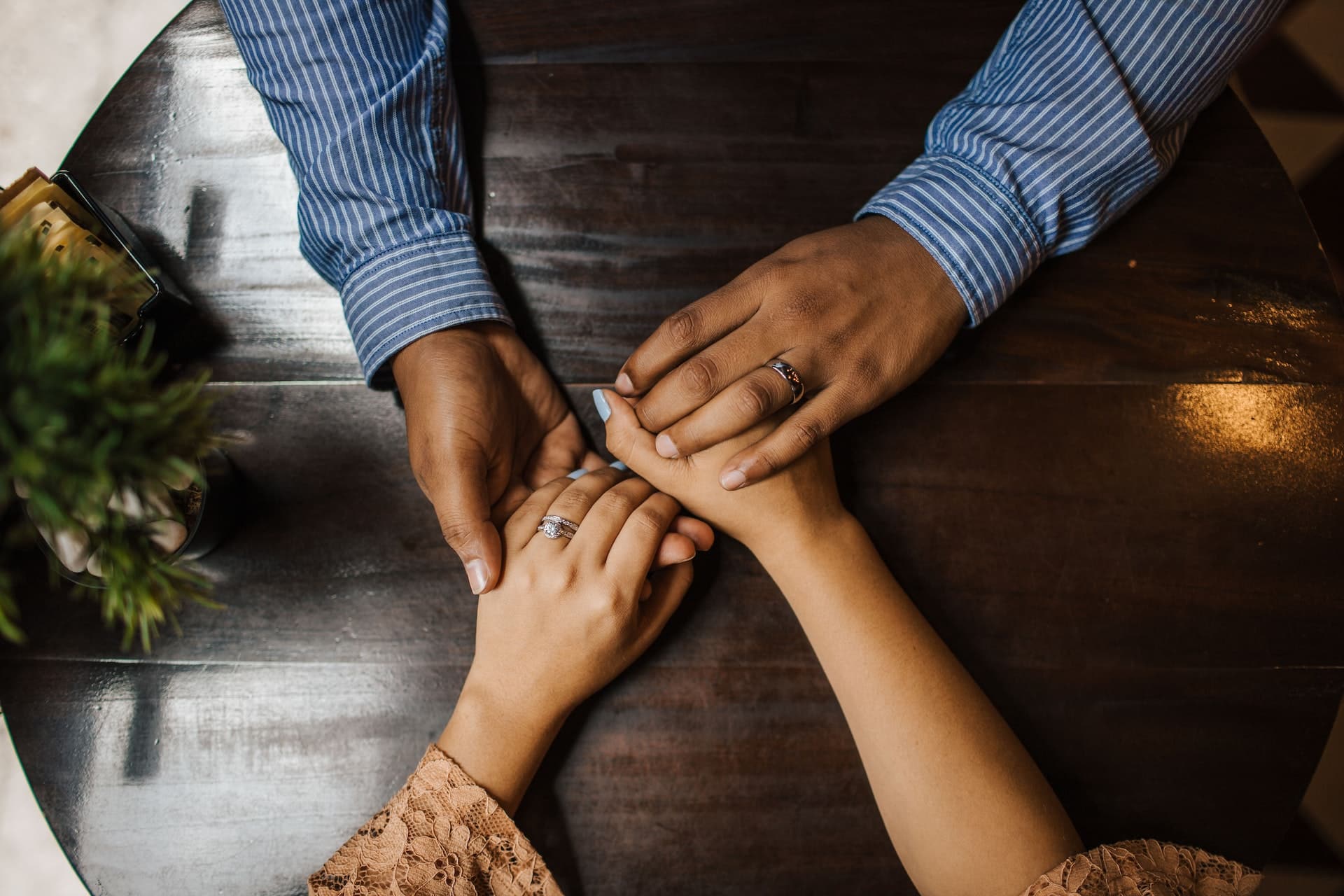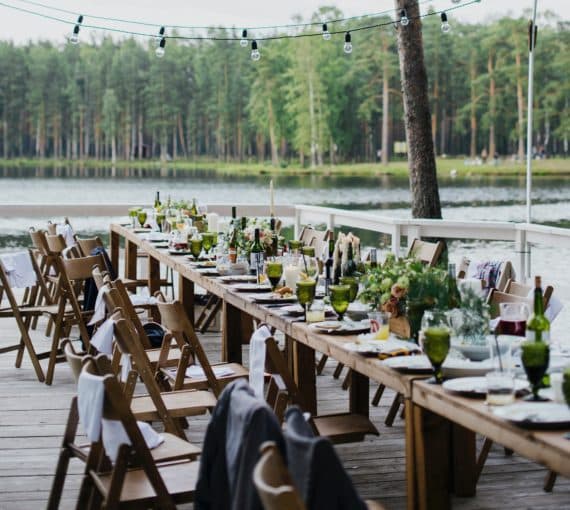
There will come a time when we won’t be here anymore. Thankfully, there are green end-of-life options to choose from when honouring your dearly departed or planning your own funeral, burial or celebration of life. (Photo: Luis Quintero via Pexels )
We’re all interconnected with nature. As David Suzuki says, “What we do to nature, we do to ourselves” and vice versa. Death is a natural part of existence, so just as it’s critical to consider the environmental impacts of life, it’s also important to consider the environmental impacts of death. Here are some green end-of-life options to choose from when honouring your dearly departed or planning your own funeral, burial or celebration of life.
Green end-of-life funerals and burials
Cultures worldwide have diverse death traditions, customs and rituals. Funerals and burials are ancient ways of commemorating lives.
Death care in North America is a multibillion-dollar industry. In Canada, funeral home revenue was $1.7 billion in 2022.
In North America, funerals are typically divided into visitation, funeral and burial. But these three parts differ according to religious and cultural practices.
So how do death rituals affect the environment and how can you plan a green end of life?
Embalming
Modern embalming processes pump a cocktail of chemicals — commonly formaldehyde, phenol, methanol, sodium borate, sodium nitrate, glycerin, colouring agents and water — into a deceased body. (Embalming once used arsenic!) The main preservation ingredient is “formalin” (formaldehyde mixed in water), a highly toxic, carcinogen hazardous to human and ecosystem health.
One average embalming requires a minimum of twelve litres of solution. In the U.S., more than three million litres of embalming fluid end up in the soil every year through burial. As the body and casket decompose, formalin can leech into the soil and contaminate groundwater.
Forgo embalming, when possible and appropriate.
Casket production and burial
Caskets have evolved over centuries. Modern coffins come in a variety of styles and shapes, from finely crafted wood to industrial steel or bronze, often lined with plush fabric. It’s estimated that conventional burials in the U.S. alone use 30 million board feet of hardwood, nearly three million kilograms of copper and bronze, more than 104 million kilograms of steel and almost two billion kilograms of reinforced concrete.
Because it’s affordable, wood is still the most popular casket material. But the wood used is often sourced from unsustainable logging practices. The amount of casket wood buried per year is equivalent to approximately 3.6 million hectares (nine million acres) of forest.
Casket embellishments are often made of plastic, metal, fabric, paint and varnish that contain chemicals that leach into the ground over time and contaminate soil, water and ecosystems. A study on cemetery leachate showed that the pollutants in conventional burials are not limited to the area in which they are interred. Soil samples taken at coffin depth revealed elevated concentrations of metals used in casket construction, such as copper, lead, zinc and iron.
Due to increasing demand for caskets made from sustainable materials, such as bamboo, seagrass, willow or other fast-growing and renewable resources, retailers have begun including “enviro-caskets” in their catalogues. If you opt for a casket lining, choose one made with unbleached, biodegradable cotton. If you don’t want to be buried in a casket, ask for a biodegradable burial shroud.
Cemeteries and land use
Cemeteries or graveyards are designated consecrated places where dead are buried or deposited. Burying the dead in specified locations has been a global cultural custom for centuries.
Beyond the environmental implications of interring embalmed bodies in non-biodegradable caskets, cemeteries also require significant amounts of land for burial plots, roads and infrastructure. As urban areas expand, this can lead to habitat loss and/or fragmentation. Upkeep of cemetery lawns and gardens uses vast amounts of water and often involves chemical fertilizers.
Cemeteries also generate a lot of waste from caskets, grave liners, flowers and other burial materials. Many of these materials are not biodegradable and contribute to waste management challenges.
Cemeteries can hold historic, cultural and/or familial value. If you or a loved one wants to be buried in a cemetery that has particular significance, you can still reduce environmental impact by choosing not to embalm or use a casket made of unsustainable, non-renewable resources and/or a traditional grave marker.
Regardless of where, if you or a loved one wants to go in the ground, advocate for a green burial.

Leave an environmental legacy
If you have the means, consider leaving a legacy gift to the David Suzuki Foundation that will fund vital work for years. You’ll support scientific research and advocacy, help restore and protect Canada’s natural heritage for generations to come, and power tomorrow’s environmental leaders and thinkers.
Grave markers
Grave markers with the deceased’s name, birth and death dates and often a epitaph make a memorial site easier to find.
Headstones, tombstones, plaques and monuments require non-renewable resources such as granite, marble, concrete or bronze, often treated with chemical coatings to enhance their appearance and protect them from weathering. They stand the test of time — there are gravestones in maintained cemeteries that are more than 500 years old.
The energy required to quarry, cut, shape and transport stone leads to significant carbon emissions throughout the supply chain.
Forgo traditional grave markers made of non-renewable resources. Commemorate your loved one’s final resting place with an environmentally friendly option.
- Natural stone. Choose locally sourced, natural stone found in your region. You can hand engrave it, but don’t use sealants or finishes.
- Living memorials. Plant a tree, shrub or perennial plant as a living memorial. Choose native species to support local biodiversity and create a lasting tribute with ecosystem benefits.
- Carved wood or bamboo. Choose locally sourced wood or bamboo. Both are renewable and will biodegrade over time.
- Moss art. Encourage moss growth on natural stone or wooden markers to create artistic designs or patterns. Moss art not only adds beauty but also promotes ecological balance.
- Commemorative benches. Install or sponsor a commemorative bench near the burial site or the departed’s favourite park or green space. It will provide a place for loved ones to sit and reflect while appreciating and connecting with nature.
- Recycled material. Repurpose reclaimed materials, such as salvaged metal or driftwood, to craft unique grave markers.
Cremation and emissions
The extremely high temperatures of cremation removes all carbon content from a body. The process has steadily risen in popularity in Canada and now leads the end-of-life market due to its affordability, flexibility, the shift of some religious attitudes toward cremation and the perception that it’s a greener choice.
Cremation has often been marketed as more Earth-friendly than traditional burials. It has less of an environmental impact than burials overall, but it’s not a green end-of-life alternative.
The cremation process typically takes two hours and requires the chamber to be heated to 650-1,090 C. The energy needed to reach and maintain these temperatures is immense. One cremation is estimated to produce one-quarter of a tonne (535 pounds) of carbon dioxide, equivalent to a 980-kilometre drive in an average size gas-powered vehicle.
“Natural” gas, or fracked gas, is a common energy source for cremations. To avoid climate catastrophe, we must move away from dependence on burning fossil fuels, in life and in death. As more eco-minded folks seek green end-of-life options, the funeral industry will have to adapt.
A few funeral and death care facilities in Canada use a blend of renewable energy and “natural” gas sourced from methane capture projects at landfills, wastewater treatment facilities and anerobic digestion sites to fuel their cremation services. If you choose cremation, try to find this option.
Traditional burial and funeral practices of Indigenous Peoples in Canada
The diverse traditional burial and funeral practices of these lands are deeply rooted in Indigenous cultural and spiritual beliefs. Practices vary, but generally emphasize the connection between the dead, the land and the spiritual world.
The Haida Nation erected mortuary poles with a cavity in the top to hold a burial box of a high-ranking community member. Remains would naturally decompose and return to the earth. Ojibwe burial practices centred around the belief that a person travels from this life to the Land of Souls along the Path of Souls. To assist in this spiritual transition and mourn, loved ones dressed the deceased in ceremonial clothing, wrapped them in blankets and buried them with personal possessions such as pipes, tobacco and medicine bundles. A totem, often made of natural elements, would be placed at the head of the grave.
Maintaining these traditional burial practices continues to be a challenge due to the historical impacts of colonization, including forced assimilation, cultural suppression and legal and regulatory barriers related to land use.
For instance, the Kanehsatà:ke Resistance in 1990 (also known as the Oka Crisis) was sparked by the proposed expansion of a golf course and residential development on disputed land that included a Kanyen’kehà:ka burial ground. It was cancelled, but the federal government still purchased the land and there was no organized land transfer to the Mohawks of Kanehsatà:ke. In 2020, an archeological dig was proposed on disputed land that members of the community suspect is a Mohawk burial ground. The traditional Rotinokseshá:ka, People of the Longhouse and the Kanehsatà:ke government were not consulted prior to the planning of the dig.
GREEN BURIAL TRADITIONS AROUND THE WORLD
Sky burials
In some regions of Tibet and Mongolia, sky burials are a culturally and spiritually significant end-of-life custom. A deceased’s body is placed on a mountaintop or elevated area and exposed to the elements, to be consumed by scavenging birds.
Water burials
Water burials are practiced in some Norse, Buddhist, Hawaiian and Japanese cultures. A deceased's body is placed in a body of water, often in a biodegradable container or wrapped in a shroud. In some cultures, weighted objects are attached to help sink the body.
Forest burials
In South Korea, forest burials are common. A deceased's body is buried in designated forests and green spaces, often without a coffin. Instead of headstones, engraved stones are used to mark the site.
What are the greenest end-of-life practices?
Green burials, alkaline hydrolysis (a.k.a. “aquamation”) and natural organic reduction (a.k.a. “human composting” or “terramation”) are eco-friendly end-of-life practices that allow you or your loved ones to express environmental values in death.
All three options are available in Canada in some form, but they may not be accessible to everyone. Advocacy and education will help create more accessible, affordable green end-of-life options in Canada.
Ask funeral homes about their Earth-friendly funeral and burial options, and do what you can with what’s available. Here are some decisions you can make (or advocate for) in each traditional burial practice that can help reduce your environmental impact.

Plan a green end-of-life funeral or celebration of life
Green end-of-life practices are relatively new in Canada and not accessible to everyone, but you can still honour your loved one by organizing an eco-conscious funeral or celebration of life with these planet-friendly event planning tips.
Green burials
Green or natural burials are low impact, use less energy, consume fewer resources (like water), are less toxic and may include local, sustainable materials.
Guess what? They’re not a modern, new-age practice, but have been used as long as humans have been burying bodies. Baha’i, Indigenous, Jewish and Muslim communities have long been burying their dead this way.
The first urban green burial site in Canada opened in Victoria, British Columbia in 2008. Since then, more than 10 certified sites have opened throughout the country. Hybrid green cemeteries have dedicated sections for natural burials.
Instead of being embalmed, bodies are wrapped in a biodegradable shroud and/or placed in a biodegradable casket, which is buried directly into the ground of the protected area. The surface of the grave is allowed to settle before being restored with local native species of grasses, flowering groundcovers, shrubs and trees.
Memorialization for a green burial is typically simple and visually appropriate for the site, with basic inscriptions on naturally sourced materials or small, hand-crafted monuments made of natural and preferably locally sourced materials.
Alkaline hydrolysis
Alkaline hydrolysis (a.k.a. “aquamation” or “water cremation”) is flameless and uses water, alkaline chemicals, heat and agitation to dissolve a body inside a purpose-built, stainless steel cylinder. The process uses less water than an average household in Canada uses in one day.
Alkaline hydrolysis is legal and available through select funeral homes in Newfoundland and Labrador, Ontario, Quebec and Saskatchewan. Legislation has been considered and/or requested through public lobby efforts in other provinces and territories.
Whether the cremation is done by water or fire, you’re going to get the same end product. Inorganic remains are usually returned to loved ones in an urn. Some opt to create memorial products out of the remains, such as ceramic art pieces or hand-blown glass memorials, or bury them in a commemorative planter. The rest of the wastewater is returned to the water system. Like compost, the residual “aquamated” remains enrich the water. In fact, a U.S. alkaline hydrolysis centre uses organic elements from the wastewater as agricultural fertilizer!
Natural organic reduction
Natural organic reduction (a.k.a. “human composting” or “terramation”) is a green end-of-life option that naturally transforms the deceased into soil. Everything used to decompose the body is biodegradable and non-toxic.
Although this eco-friendly alternative is not yet approved in Canada, Return Home (an American company) offers its service to residents of Canada. The body must be shipped to their Seattle facility, which your local funeral home can facilitate for a price. You can then choose to receive your loved one’s soil via mail or donate it to the organization’s local land revitalization program.
Should you donate your body to science?
In many parts of the country, people can donate their bodies to science for medical research. Dozens of medical schools in Canada accept anatomical donations.
This can happen at the time of death, or as a part of a last will and testament. The medical school usually covers costs related to collecting the body, cremation and the return of cremated remains to family. Some medical schools will also return the remains of the body as-is to the family upon request, giving you the option to conduct a green burial.
Though donating your body to science is great for those interested in supporting and advancing medical research, it’s one of the least green options. Depending on the research and facility, donated bodies are used for up to three years. To keep the cadavers preserved for such lengths of time, a cocktail of highly aggressive and toxic chemicals is used to embalm them. Given that many folks’ families opt for the complimentary cremation when the cadaver is retired from medical use, that slurry of toxic chemicals will become air pollution.



